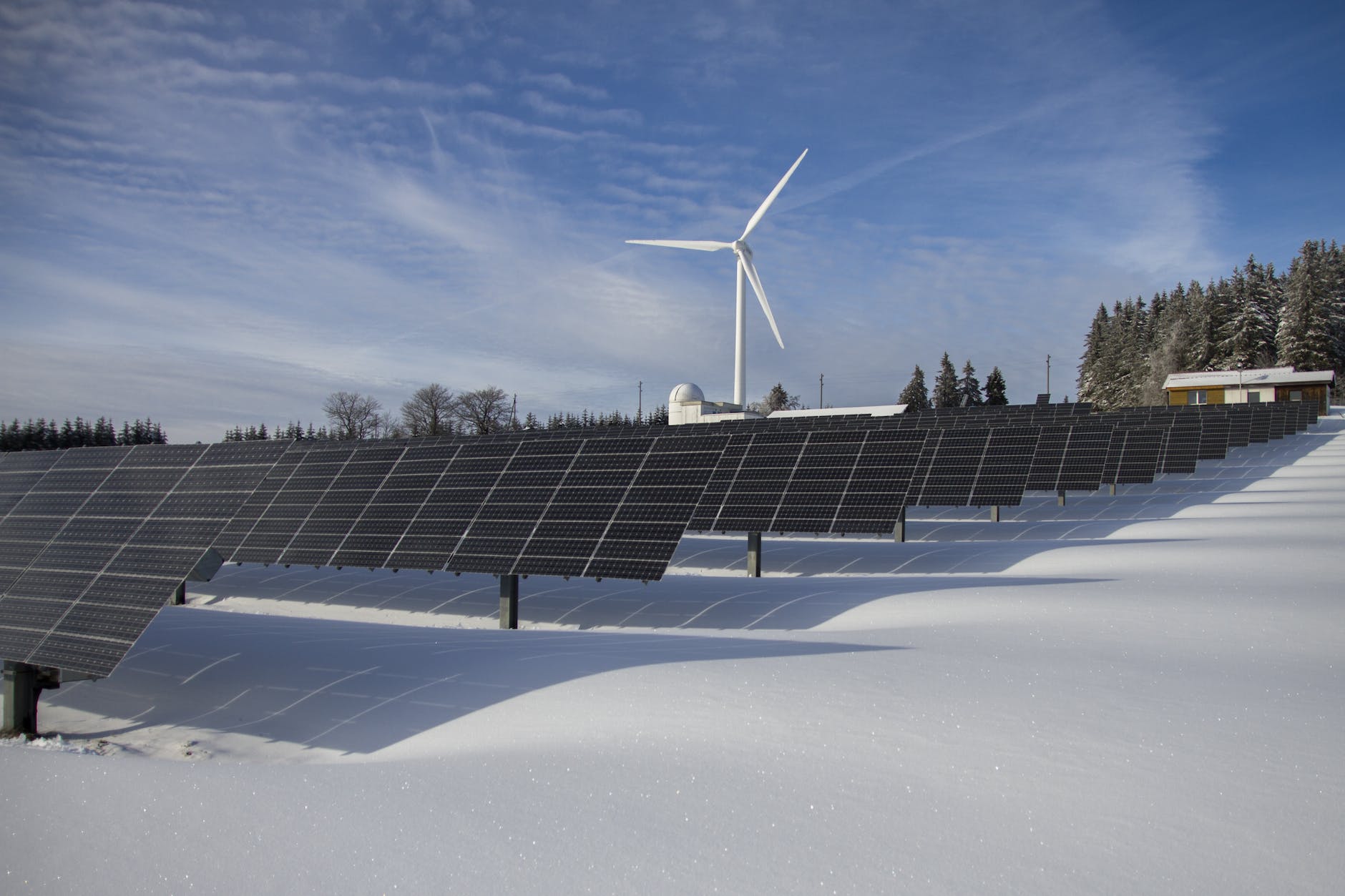
- Recognizing the far-reaching impacts of renewable energy on various facets of life.
- Discussing the intersection of technological innovation with sustainable living practices.
- Examining the broader economic implications of a shift toward cleaner energy sources.
- Highlighting the global momentum building in favor of renewable energy advancements.
Understanding Renewable Energy Solutions
Rising global interest in sustainable practices has been casting a spotlight on renewable energy solutions. At the forefront are systems that allow us to utilize the natural and endless bounty of resources like the sun, wind, and water — each a promising alternative to depleting fossil fuels. Against the backdrop of skyrocketing demands and the urgent imperatives imposed by climate change, it’s evident that the pivot towards renewable energy is not just a trend but a fundamental shift in our approach to energy consumption.
The Impact of Renewable Energy on the Environment
Transitioning to renewable energy is one of the most effective measures to protect our environment. Unlike conventional power sources, these green alternatives do not emit greenhouse gases contributing to global warming. Each kilowatt-hour of renewable energy diminishes the prevalence of toxic pollutants, paving the way for cleaner air and water, promoting biodiversity, and mitigating adverse health effects associated with fossil fuel pollution.
Understanding this shift means recognizing the diversity and adaptability of renewable energy systems. These systems, ranging from sprawling solar farms to compact residential setups, display the capacity to meet various energy needs. Moreover, they represent a convergence of environmental stewardship and technological innovation, pushing the boundaries of what’s feasible in pursuing a greener world.
Types of Renewable Energy Sources
Solar panels work tirelessly as the sun blazes in the sky, capturing and converting this vast radiant energy into usable electricity. Wind farms are just a little behind in the race towards sustainability, where turbines stand tall, their blades sweeping the air to generate power. And let’s not forget the ancient force of water, which, through modern hydropower technologies, harnesses the flow of rivers or the tides of seas, quietly yet powerfully producing energy. Each source brings unique characteristics and advantages, and their adoption varies based on geographical, technological, and economic factors.
Technological Advancements in Renewable Energy Systems
The landscape of renewable energy is rapidly evolving thanks to technological breakthroughs. Solar cells have become more efficient, wind turbines more robust, and energy storage solutions more capable. These innovations enhance the core functionality of renewable energy systems and expand their applicability to a broader range of environments and markets. Emerging technologies, such as floating solar panels and offshore wind farms, showcase how ingenuity can overcome physical and geographic limitations to energy production. Smart grids, which use digital technology to manage electricity supply and demand, are an integral component of this new energy ecosystem, paving the way for a future where energy is cleaner and brighter.
Economic Aspects of Renewable Energy Solutions
Once considered prohibitively expensive, renewable energy solutions have seen prices drop dramatically, bringing them on par with or, in some cases, cheaper than traditional energy sources. This price reduction, coupled with governmental policy support, has bolstered the economics of green energy. Similarly, employment opportunities within the renewable sector have surged, contributing to an eco-friendly economic boost reverberating through the job market.
Keen observers and decision-makers can refer to analyses like the U.S. Energy Information Administration’s report, which thoroughly reviews the renewable energy market, policy tools, and long-term financial advantage of these clean energy solutions, supporting the growth trajectory of renewables on an economic front.
Overcoming Challenges Faced by Renewable Energy
Adopting renewable energy on a global scale is challenging. The intrinsic unpredictability of sources like the sun and wind presents a significant challenge known as intermittency. This issue underscores the need for advanced energy storage solutions and an agile grid infrastructure that integrates variable renewable energy flows. Moreover, successful implementation requires overcoming social and institutional barriers by ensuring community engagement and fostering the requisite regulatory frameworks to support a smooth transition toward renewable energy infrastructures.
Case Studies: Successful Renewable Energy Projects
Around the world, there are inspiring examples of how renewable energy makes tangible differences in communities. The success stories are numerous, from large-scale solar installations providing electricity to entire regions to wind-powered generators bringing power to remote areas. These projects are testaments to the feasibility, scalability, and positive environmental and social impacts of renewable energy solutions. Studying these precedents is crucial for understanding the potential returns on investing in green energy projects and navigating the complexities involved in their execution.
Integration of Renewable Energy into Daily Life
The infusion of renewable energy into daily life is increasingly straightforward due to user-friendly systems and a growing cultural emphasis on eco-conscious living. Individual households can contribute to a greener grid by installing solar panels or participating in community energy initiatives. Even simple actions, such as opting for electricity providers that supply renewable energy, can make a profound difference. Beyond residential efforts, the rise of electric vehicles is shifting transportation paradigms, and as charging infrastructure continues to expand, these sustainable transport options will likely become a new normal.
The Global Movement Towards Renewable Energy
Internationally, there has been a growing consensus about shifting towards renewable energy. This paradigm shift is reflected in the commitments made under international climate agreements and the collaborative efforts across national boundaries, channeling investments and innovations into clean energy ventures. Importantly, this shift is also a grassroots phenomenon, with communities and local organizations worldwide advocating for change and demanding energy policies prioritizing sustainability and environmental conservation.
Preparing for a Renewable Energy Future
Educational outreach remains critical as we anticipate a future increasingly powered by renewable energy. Dispelling myths about renewables and highlighting their practicality and economic soundness will continue to be an essential facet of public discourse. This dialogue, powered by informed citizens and progressive policymakers, will undoubtedly chart the course for a more robust and enduring shift towards renewable energy, positioning it as an alternative and the primary source in a diversified energy portfolio.